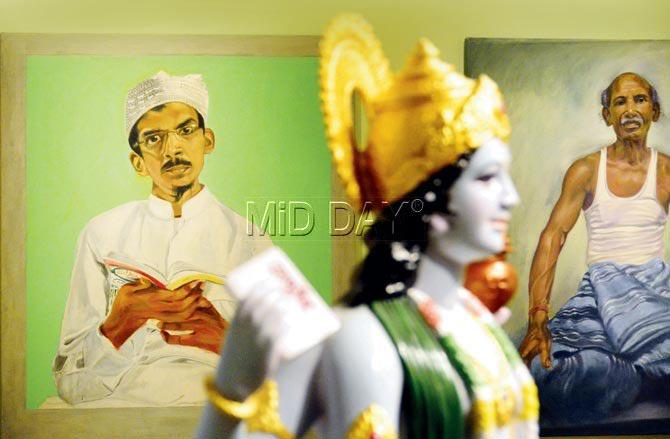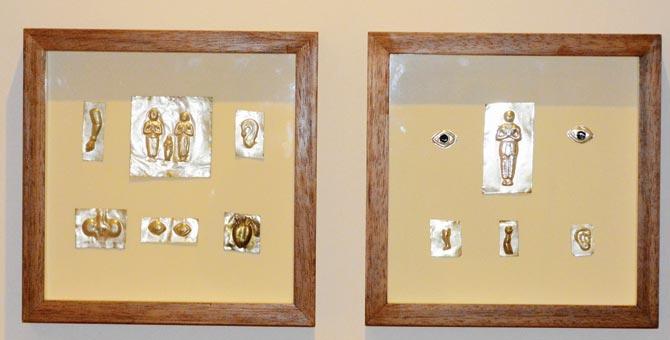Modern and ancient Indian health practices make an unlikely hero at a grand museum exhibit that marks the debut of a collection by a British medicine man

As he leads us through the Premchand Roychand Gallery on the first floor of the Chhatrapati Shivaji Maharaj Vaastu Sanghralaya (CSMVS), Fort, our eyes realise there’s a lot to take in.
For starters, at the entrance is an exhibit of 80 plants, which among others, includes the Indian home staple, tulsi. There’s also the aloe vera. Of Indian origin? we wonder. “Well, the thing about India is that it assimilates from other cultures and makes it its own. One doesn’t know which part of the world the aloe vera is native to, but it is a plant that survives all kind of conditions,” says Ratan Vaswani, curator of Tabiyat, the Mumbai-leg of a three city exhibition titled Medicine Corner, of which he is also the project coordinator.
ADVERTISEMENT
 Dhanvantri, the god of Ayurveda, shares space with healers from Dharavi at Chhatrapati Shivaji Maharaj Vaastu Sanghralaya, as part of the exhibition, Tabiyat. Pic/Bipin Kokate
Dhanvantri, the god of Ayurveda, shares space with healers from Dharavi at Chhatrapati Shivaji Maharaj Vaastu Sanghralaya, as part of the exhibition, Tabiyat. Pic/Bipin Kokate
Starting Tuesday, CSMVS will host the two-month long exhibition that explores the culture of medicine in India across centuries. It is organised by UK charity, Wellcome Trust. The one-hour tour that Vaswani offers in the yet-to-be-ready gallery throws up nuggets of information.

Ratan Vaswani, the curator of Tabiyat. Votives (below) offered at a Catholic basilica and a temple to seek blessings
The broad theme of the exhibition is to look at the various ways in which medicine enters lives in India. For this, Vaswani decided — instead of dividing it into cultures of unani, ayurvedic or allopathic — he’d section off the gallery into the home, shrine, street, the clinic and a generic area that cannot be categorized.

Modern medicine, too, finds space, especially in a poster that depicts the relief and care provided by Delhi’s AIIMS to those affected in the 2002 Gujarat riots. The walls are home to posters of bonesetters of Dharavi and tribal healers from Meghalaya. Vaswani makes no distinction. “I have avoided passing judgment about the efficacy of any form. That’s not what I am going for,” he emphasises.Medicine finds similarities across religions, as with metal plates of human body parts framed in the shrine section. With his palms, Vaswani hides the wall text of the two frames. “Can you tell where these plates are from?”
“One is from a Catholic basilica and another from Madurai’s Meenakshi Amman temple. These are images of stricken body parts offered as votives to seek blessings,” he then explains.
Vaswani has worked on the project for two years and even indulged in a bit of test drive. “I had my prakriti analysed and the Ayurvedic practitioner told me that I was very ‘pitta’ (bilious), by just looking at my finger nails and eyebrows. She told me that I am endlessly curious, which was startling. I have become more open-minded to the idea now.”
In the other section, is a poster depicting rhinoplasty (commonly known as the nose job), proving that Indians were practising surgery even before the advent of modern Western medicine. “There is a germ of truth in that surgery existed in ancient India. But, there’s also a nationalist agenda to it today. I can’t say if there was heart surgery in India during this period, but definitely cataract and rhinoplasty.”
 Subscribe today by clicking the link and stay updated with the latest news!" Click here!
Subscribe today by clicking the link and stay updated with the latest news!" Click here!








